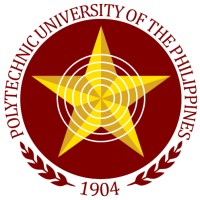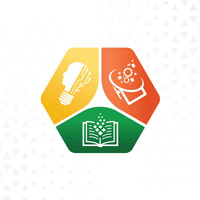John Benedic R. Enriquez
AssociateInformation Technology
Manila, Metro Manila · FEU Institute of Technology
Personal Information
Short Biography
IT Faculty. College of Computer Studies and Multimedia Media Arts. Web And Mobile Application Cluster. Far Eastern University - Institute of Technology.
Skills
Web Design and Development
Master (100%)
Animation
Advanced (80%)
Drawing
Novice (50%)
Video Editting
Novice (50%)
Programming
Master (100%)
Educational Qualification

Masteral · Nov 2014 - Nov 2014
Master of Science in Information Technology
Database Administration · Polytechnic University of the Philippines

Tertiary · Nov 2013 - Nov 2013
Web Design and Animation
De La Salle - College of Saint Benilde

Tertiary · Mar 2009 - Apr 2009
Bachelor of Science in Information Technology
University of the East
Seminars and Trainings

Attendee
Nanolearning: Bite-Sized Content as the Next Big Trend in Contemporary Education
Awarded by Educational Innovation and Technology Hub on December 12, 2023
View Credential
Attendee
Tech-Enabled Pedagogies: Empowering Modern Teachers with Educational Technologies
Awarded by Educational Innovation and Technology Hub on August 09, 2023
View CredentialResearch Publications
Conference Paper · DOI: 10.1109/HNICEM60674.2023.10589054
HelpTech: Elevating School Operations with Automatic Ticket Categorization through Natural Language Processing
2023 IEEE 15th International Conference on Humanoid, Nanotechnology, Information Technology, Communication and Control, Environment, and Management, HNICEM 2023, 2023
![]() Aclober G.M.I.
Aclober G.M.I.
![]() Teodoro F. Revano, Jr.
Teodoro F. Revano, Jr.
![]() Manuel B. Garcia
Manuel B. Garcia
![]() John Benedic R. Enriquez
John Benedic R. Enriquez
![]() Habal B.G.
Habal B.G.
![]() Tuazon J.B.
Tuazon J.B.
Providing support is one thing, generating an automatic ticket category based purely on the textual data provided is another. This study is working towards encouraging the educational landscape to start integrating AI in further enhancing the way students learn and the way teachers are giving their lessons. The focus of this study is to use the subset of AI that concentrates on making machines understand how humans talk which is known as NLP. By using several Python libraries, 3 text classification algorithms - namely SVM, Naïve Bayes, and logistic regression were used to train the previously collected dataset and choose the model that will be integrated to the web-based helpdesk system called HelpTech. With the help of the model, the system instantly categorizes the issue submitted by the end users resulting to an easier way to use the educational tools available which assist the stakeholders in developing their digital literacy.
Conference Paper · DOI: 10.1109/HNICEM57413.2022.10109412
"Hey IDE, Display Hello World": Integrating a Voice Coding Approach in Hands-on Computer Programming Activities
2022 IEEE 14th International Conference on Humanoid, Nanotechnology, Information Technology, Communication and Control, Environment, and Management, HNICEM 2022, 2022
![]() Manuel B. Garcia
Manuel B. Garcia
![]() John Benedic R. Enriquez
John Benedic R. Enriquez
![]() Rossana T. Adao
Rossana T. Adao
![]() Happonen A.
Happonen A.
Following recent advancements in automatic speech recognition (ASR) technologies, we replicated an experiment four decades ago that utilized voice as an input modality for computer programming. We also extended this experiment by investigating the pedagogical effectiveness of 'programming by voice' in terms of attitude, self-efficacy, code correctness, and coding speed. A total of 96 students from an institute of technology in the capital region of the Philippines were randomly selected to participate in a quasi-experimental study using a one-group pretest-posttest design. We subjected students to programming activities with different levels of difficulty to compare voice and keyboard. Our results show that although voice decreases negativity, it likewise decreases control, which means that both attitude and self-efficacy are positively and negatively affected, respectively. Using voice as an input modality also allows students to code faster when the activities are easy but not when they are moderate or difficult. Code correctness analysis shows that voice is only preferable for easy and moderate machine problems. With the deviation of our findings from an experiment four decades ago, we can now conclude that ASR technologies and voice as input modality provide substantial implications and new opportunities for teaching and learning computer programming.
Conference Paper · DOI: 10.1109/HNICEM.2018.8666302
Logical guessing riddle mobile gaming application utilizing fisher yates algorithm
2018 IEEE 10th International Conference on Humanoid, Nanotechnology, Information Technology, Communication and Control, Environment and Management, HNICEM 2018, 2018
![]() Teodoro F. Revano, Jr.
Teodoro F. Revano, Jr.
![]() Manuel B. Garcia
Manuel B. Garcia
![]() Habal B.G.M.
Habal B.G.M.
![]() Contreras J.O.
Contreras J.O.
![]() John Benedic R. Enriquez
John Benedic R. Enriquez
Riddles, while perceived as a past time activity for kids, have educational features that enhances the logical thinking of a person. In this paper, the researchers aimed to develop a logical guessing riddle mobile gaming application that focuses on randomization of questions in the game by selecting the index together with the same generated number and derived from combining the words wit and wisdom. It also has educational features that enhances the logical thinking of a person, and improves the cultural awareness and linguistic aspect of a person. The algorithm can determine how many questions the riddle game has and that total number of questions will be considered as the length of an array that used for Fisher Yates algorithm. Each array has its own corresponding index. The index is always starting with zero up to the last number of array. The researchers set a random values and it always greater than or equal 0 and less than the index.
Conference Paper · DOI: 10.1109/HNICEM.2018.8666227
A pornographic image and video filtering application using optimized nudity recognition and detection algorithm
2018 IEEE 10th International Conference on Humanoid, Nanotechnology, Information Technology, Communication and Control, Environment and Management, HNICEM 2018, 2018
![]() Manuel B. Garcia
Manuel B. Garcia
![]() Teodoro F. Revano, Jr.
Teodoro F. Revano, Jr.
![]() Habal B.G.M.
Habal B.G.M.
![]() Contreras J.O.
Contreras J.O.
![]() John Benedic R. Enriquez
John Benedic R. Enriquez
The combination of multimedia technology and Internet provides an amiss channel for pornographic contents accessible by certain sensitive groups of people. Furthermore, the same channel provides the easiest medium to distribute illicit images and videos without an autonomous content supervision process. In this study, an application was developed grounded from a pixel-based approach and a skin tone detection filter to identify images and videos with a large skin color count and considered as pornographic in nature. With nudity detection algorithm as the foundation of the system, all multimedia files were preprocessed, segmented, and filtered to analyze skin-colored pixels by processing in YCbCr space and then classifying it as skin or non-skin pixels. Afterwards, the percentage of skin pixels relative to the size of the frames is calculated to be part of the mean baseline for nudity and non-nudity materials. Lastly, the application classifies the files as nude or not, and then filter it. The application was evaluated by supplying a dataset of 1,239 multimedia files (Images = 986; Videos = 253) collected from the Web. On the final testing set, the application obtained a precision of 90.33% and accuracy of 80.23% using the supplied dataset.


